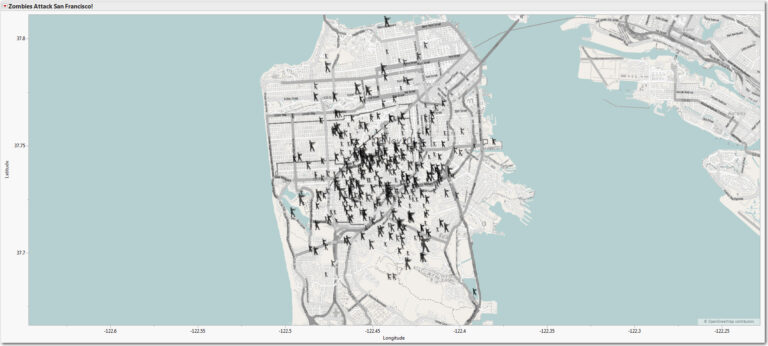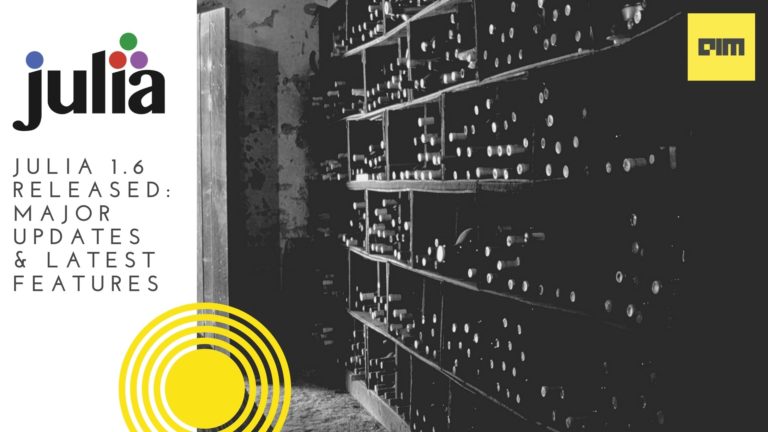Julia is a flexible and dynamic programming language which is usually used for scientific computing. In a short span of time, the popularity of this language has grown exponentially due to its speed, dynamism and for ease to use. The demand for learning Julia has gone up manifolds and with this article, we list down 10 online free resources where you can learn Julia language from scratch. These resources will especially be quite useful for beginners who have never ventured onto this language before.
(The list is in no particular order)
1| Official Documentation On Julia
This is the official documentation on Julia language where you can learn the scientific computing language from scratch. You will learn about the strings, functions, types, variables, libraries, etc. right from the basic introduction to developing and debugging Julia’s code.
Read here.
2| JuliaCon 2015 Video Tutorial (Youtube)
This comprehensive video tutorial on Julia programming is from the JuliaCon conference held in the year 2015. The Julia community actively participated in the conference to give various informative talks and workshops on Julia. The topics include areas such as solving optimisation problem with JuliaOpt, climate classification and clustering with Julia, cluster managers, parallel Julia, building web-powered applications in Julia, and others.
Watch here.
3| Julia Bloggers (Blog)
This blog is a tutorial on Julia language where you can learn about the basic concepts as well as the coding techniques. The topics covered here are differential equations, modelling toolkit, getting the value of a pointer in Julia, regression from scratch, random forest, Julia data science, and other such topics.
Read here.
4| Julia Tutorial By MIT (Youtube)
This video tutorial on Julia teaches the fundamentals of this programming language which was recorded during the MIT Independent Activities Period. It consists of a total of ten videos which cover topics such as rationale behind Julia and the vision, data analysis in Julia with Data Frames, statistical models, Fourier transforms, metaprogramming and macros in Julia, parallel and distributed computing with Julia, etc.
Watch here.
5| Fast Track To Julia
This can be called as the cheat sheet for learning Julia. This overview will help you to learn the basic concepts including operators, shell, libraries, package management, strings, characters, arrays, loops, functions, exceptions, etc.
Read here.
6| Julia: A Fresh Approach To Numerical Computing (PDF)
This paper introduces the design principle of the Julia language. You can gain insights on writing programs with and without types, leveraging language design for high-performance libraries, tools for numerical integrity, etc.
Read here.
7| A Deep Introduction to Julia for Data Science and Scientific Computing
This tutorial starts by introducing the basic syntax of Julia language and quickly moves into the details of how this language is different from other scripting languages and how to exploit Julia’s type system including multiple dispatches to be able to achieve C/Fortran-like performance while maintaining the concise syntax of a scripting language. You will also learn how to design Julia projects. The major goal of this tutorial is to use Julia’s language and syntax to bridge the gap between “package users” and “package developers” in the way that Julia has done.
Read here.
8| Julia Scientific Programming (Online Course)
The course is divided into four modules and introduces Julia as a first language. The extensive assignments teach you the language with much ease and enable you to write your own Julia program from scratch. It also equips with understanding the advantages and capacities of Julia as a computing language, work in Jupyter notebooks and use use various Julia packages such as Plots, DataFrames and Stat.
Read here.
9| Julia Language: A Concise Tutorial
The purpose of this tutorial is to help the readers to learn, understand and start coding in Julia. The format is a fusion between a classical tutorial and a cheat sheet where it describes the elements of the language following the typical sections of the programming language.
Read here.
10| First Steps With Julia
This Julia tutorial is provided by Kaggle which will help you to get started with the scientific computing language. You will gain insights on various features of Julia including the parallelisation, speed, basics of the language and implementation of the K Nearest Neighbour algorithms. This tutorial also focuses on the task of identifying characters from Google Street View images.
Read here.



















































































